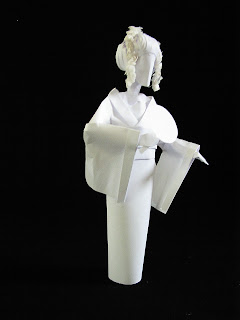The rain has started here in the Pacific Northwest and preparations are underway for Robiraki, one of the big tea events of the year. We will be changing from the summer furo season to the winter hearth of the ro season.
Usually it is around the first of November when we open the ro, but Rikyu said to open the ro when the yuzu turns yellow. Yuzu is on of my favorite fruits, not for the fruit, but for the flavor and fragrance of the skin. These smallish citrus ripen about this time of year and the skin is used to flavor sweets and garnish meals. Unfortunately, we cannot get these fruits here. I have a young yuzu tree, but it will be many years before it bears fruit.
For tea people, Robiraki is the new year of tea. Up until the opening of the chatsubo, we have been using last year's tea. So the tea that was harvested in May has been aging in the chatsubo and will be taken out, ground and used for the first time in November. The ceremony for this is called Kuchikiri and it often times will be done in conjunction with the opening of the ro at Robiraki.
This opening of the ro and opening of the chatsubo also can be a spiritual opening, so quite often the scroll in the tokonoma will the the character "kan" 閑 for barrier or gate. What ever difficulties you are having, what is stopping you from having what you want is a barrier. But this kanji character also means gate. It is the way through a barrier to the other side.
2025 Puerh.uk TianMenShan Extra Tall Ancient
2 months ago





